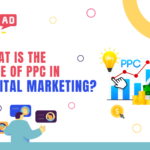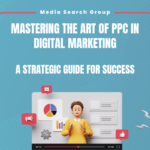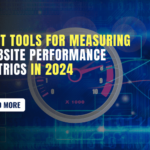Which Digital Ad Channel Dominates In Digital Marketing?
To start with, it is important to understand the diverse nature of digital advertising channels available to marketers. Digital advertising has become an integral part of businesses’ overall digital marketing strategy, offering plenty of channels to reach and engage with target audiences.
These digital ad channels include social media platforms like Facebook and Instagram, search engines such as Google, content-related networks, email marketing, and display advertising. Each channel has its unique strengths and advantages, offering different marketing objectives.
Among the various digital advertising platforms, Google ads and video marketing stand out as dominant forces, having a strong influence in the digital marketing world.
In this blog, we will discuss the best and most dominant digital ad channels in digital marketing, examining their key features, benefits, and impact on businesses worldwide.
What Are Digital Ad Channels?
In digital marketing, digital ad channels refer to online platforms and mediums through which advertisers set up their promotional content to connect with target audiences. These channels use the internet and digital technologies to facilitate advertising outreach.
Key digital ad channels encompass social media platforms like Facebook, Instagram, and Twitter, where advertisers engage users with targeted messages based on demographics and behaviors.
Advertisers utilize search engine marketing (SEM) to display ads on search result pages, capturing users actively seeking relevant information. Display Ad networks, encompassing various websites and apps, serve as platforms for visual advertisements such as banners and interactive displays.
Email marketing is yet another digital ad channel involving distributing promotional content through email messages. Video-sharing platforms like YouTube provide opportunities for video advertising, contributing to a diverse range of digital ad channels.
These channels collectively empower marketers to optimize targeting strategies, measure campaign performance, and adapt easily to changing market dynamics, enhancing the effectiveness and efficiency of digital advertising efforts.
Utilizing these channels allows you to help your customers with every question they may have while searching about your business so that you can be a step closer to your marketing goals. Most of the business goals will relate to generating leads, raising brand awareness, improving conversions, and ultimately, getting more sales.
5 Digital Ad Channels Dominate In Digital Marketing
1. Social media advertising
Social media marketing is a prominent and dominant ad channel in digital marketing that uses social networking platforms to promote products, services, or brands. There are 4.88 billion social media users in the world.
Platforms such as Facebook, Instagram, Twitter, LinkedIn, and others serve as huge spaces for advertisers to connect with their target audience. The interactive nature of social media platforms ensures direct engagement with the audience through comments, likes, shares, and messages.
Social media marketing involves creating and sharing content, including text, images, and videos, to engage users and spread brand awareness. The digital ad channel enables precise audience targeting based on demographics, interests, and behaviors, allowing advertisers to deliver their messages for maximum impact.
Advertisers can run various ad formats, including sponsored posts, carousel ads, video ads, and more, to capture users’ attention and drive desired results.
Benefits of social media advertising:
- Social media allows you to build trust with your followers. With social media marketing, you can upgrade your company image, which makes your brand more relatable to customers.
- Social media posts are easy to share among everyone, with plenty of opportunities. It will help you grow your audience base strongly.
The best ways to use social media advertising are:
- Create original content
- Use hashtags
- Be regular
2. Search engine advertising
Search engine advertising is a form of digital advertising that promotes websites by increasing their visibility in search engine results pages. It typically involves creating paid advertisements that appear at the top or bottom of search engine results when users enter relevant queries.
Search engine advertising operates on a pay-per-click (PPC) model, where advertisers only pay when users click on their ads. This targeted approach allows businesses to reach a specific audience by actively searching for relevant products or services.
Google Ads is a prominent example of a search engine advertising platform.
The flexibility to adjust campaigns in real time and the ability to set budget constraints make it a cost-effective and scalable advertising option.
Benefits of search engine advertising:
- Search engine advertising allows for precise targeting, as advertisers can choose specific keywords and demographics to reach their ideal audience.
- It offers measurable results, allowing businesses to track performance through analytics tools.
- Search engine advertising provides immediate visibility, enabling companies to quickly generate traffic and leads.
The best ways to use search engine advertising are:
- Conduct thorough keyword research.
- Optimize landing pages for conversions.
- Utilize ad extensions for more features.
3. Email marketing
Email marketing is a key digital ad channel in digital marketing that involves the use of email messages to communicate with a targeted audience for promotional purposes. It is a direct and personalized method of reaching potential customers, existing clients, or subscribers.
In 2022, the number of email users worldwide was 4.3 billion. This figure is set to grow to 4.6 billion in 2025.
Email marketing campaigns include newsletters, product or service announcements, limited offers, and more. This ad channel is highly effective for building and nurturing customer relationships, as it allows businesses to deliver relevant and engaging content directly to individuals’ inboxes.
Marketers often use segmentation and personalization strategies to deliver messages based on customer preferences, behavior, or demographics. Email marketing also serves as a cost-effective tool, offering a high return on investment (ROI).
Benefits of email marketing:
- Email is ideal for driving conversions and building brand awareness for the business.
- Email marketing provides a direct and personal way to communicate with your audience.
- Email marketing platforms offer automation features, allowing businesses to set up triggered campaigns based on user actions.
The best ways to use email marketing are:
- Create simple and concise subject headlines.
- Personalize your email marketing campaigns.
- Reserve email for customer feedback and support.
4. Paid advertising
Paid advertising is a foundational ad channel in digital marketing that involves businesses paying to display their promotional content across various online platforms. This method allows advertisers to reach a broader and more targeted audience by strategically placing ads where their potential customers are likely to see them.
Common forms of paid advertising include pay-per-click (PPC) campaigns on search engines like Google, display ads on websites and apps, social media advertising, and sponsored content.
75% of people say paid ads make it easier to find what they need.
In PPC campaigns, advertisers bid on keywords relevant to their products or services, and they pay a fee each time a user clicks on their ad. Display ads can take the form of banners, videos, or interactive content and are placed on websites within ad networks.
Paid advertising offers quick visibility and measurable results, allowing marketers to track the performance of their campaigns in real time.
Benefits of paid advertising:
- Paid advertising spreads brand awareness. When your ads appear at the top of the search engine, it means instant brand exposure.
- It provides flexibility in budget allocation and precise targeting, making it an effective ad channel for businesses aiming to increase brand awareness, drive traffic, and generate leads.
- Paid advertising increases lead generation and conversions.
The best ways to use paid advertising are:
- Remarket to your audience on the world’s largest social network, Facebook.
- Direct users who click on your ads to the landing page of your website.
5. Video Marketing
Video marketing is a compelling and important ad channel in digital marketing that utilizes video content to engage, inform, and persuade target audiences. It involves the creation and distribution of videos across various online platforms to promote products, services, or brand messages.
Video marketing has gained prominence due to the widespread availability of high-speed internet, the increased use of smartphones, and the effectiveness of visual storytelling. Platforms like YouTube, social media channels such as Facebook, Instagram, and TikTok, and even websites embed videos to capture audience attention.
94% of marketers observed that customers could better understand products and services through a video.
Businesses use different video formats, such as product demonstrations, tutorials, testimonials, and storytelling, to connect with their audience emotionally and convey messages effectively. Video marketing enhances brand visibility, encourages social sharing, and can significantly impact consumer decision-making.
As consumers increasingly prefer video content, incorporating video marketing into a digital strategy helps businesses stay competitive, boost engagement, and convey messages in a more memorable and impactful way.
Benefits of video marketing:
- Videos are highly engaging and capture the audience’s attention more effectively than text or static images. Video appeals to 54% of consumers.
- Social media platforms prioritize video content, leading to increased visibility and engagement.
The best ways to use video marketing are:
- Use the different types of videos for marketing. Target desired audiences with a suitable form of video content.
- Showcase the story to make it more relatable for customers.
Factors To Consider When Choosing The Right Digital Advertising Channel
Choosing the right digital advertising channel is crucial for the success of your marketing campaigns.
Here are five key factors to consider when making this decision:
1. Target audience
Understand your target audience and their online behavior. Different demographics and customer segments may prefer specific digital channels.
Consider where your audience spends most of their time online and which platforms align with their interests and preferences.
2. Campaign objectives
Clearly define your campaign objectives. Are you aiming for brand awareness, lead generation, sales, or another goal? Different digital advertising channels excel at achieving specific objectives.
For example, social media platforms are often effective for brand awareness, while search engine advertising is great for targeting users actively searching for products or services.
3. Budget and cost efficiency
Evaluate your budget and assess the cost efficiency of each digital advertising channel.
Some platforms may have higher costs per click (CPC) or cost per thousand impressions (CPM), and your budget should align with the expected return on investment (ROI) for each channel.
4. Ad format and creatives
Consider the types of ad formats and creatives that work best for your campaign. Some channels are more visual, like Instagram or YouTube, while others focus on text-based search ads, like Google Ads.
Choose the channel that allows you to showcase your product or service effectively and aligns with your creative strategy.
5. A competitive world
Analyze the competitive world within each digital advertising channel. Evaluate how limited the market is, the competitiveness of ad placements, and the potential for your ads to stand out.
Consider whether your competitors are successful on a particular platform and whether there is digital space for your brand to capture attention.
Conclusion
Various digital advertising channels play essential roles in digital marketing. Social media and search engine optimization stand out as the dominant forces, with versatility and effectiveness for businesses.
Search engine, encompassing over 90% of the global market share, ensures advertisers seek information about products or services.
Each channel brings its unique strengths, fulfils different marketing objectives, and targets the right audiences. The choice between channels ultimately depends on factors such as your campaign goals, target demographic, budget constraints, and the nature of your products or services.
As businesses use digital marketing, strategic integration of social media advertising and Google ads into their campaigns can help maximize visibility, engagement, and overall success.
The dominance of social media advertising and Google ads is a piece of evidence of its adaptability, effectiveness, and continuous evolution in meeting the wide needs of advertisers in the digital era.
Latest posts by Vijaya Tyagi (see all)
How To Track Shopify SEO Performance & Metrics (2025) - January 14, 2025
Link Building Strategies: The Ultimate Techniques for 2025 - December 31, 2024










